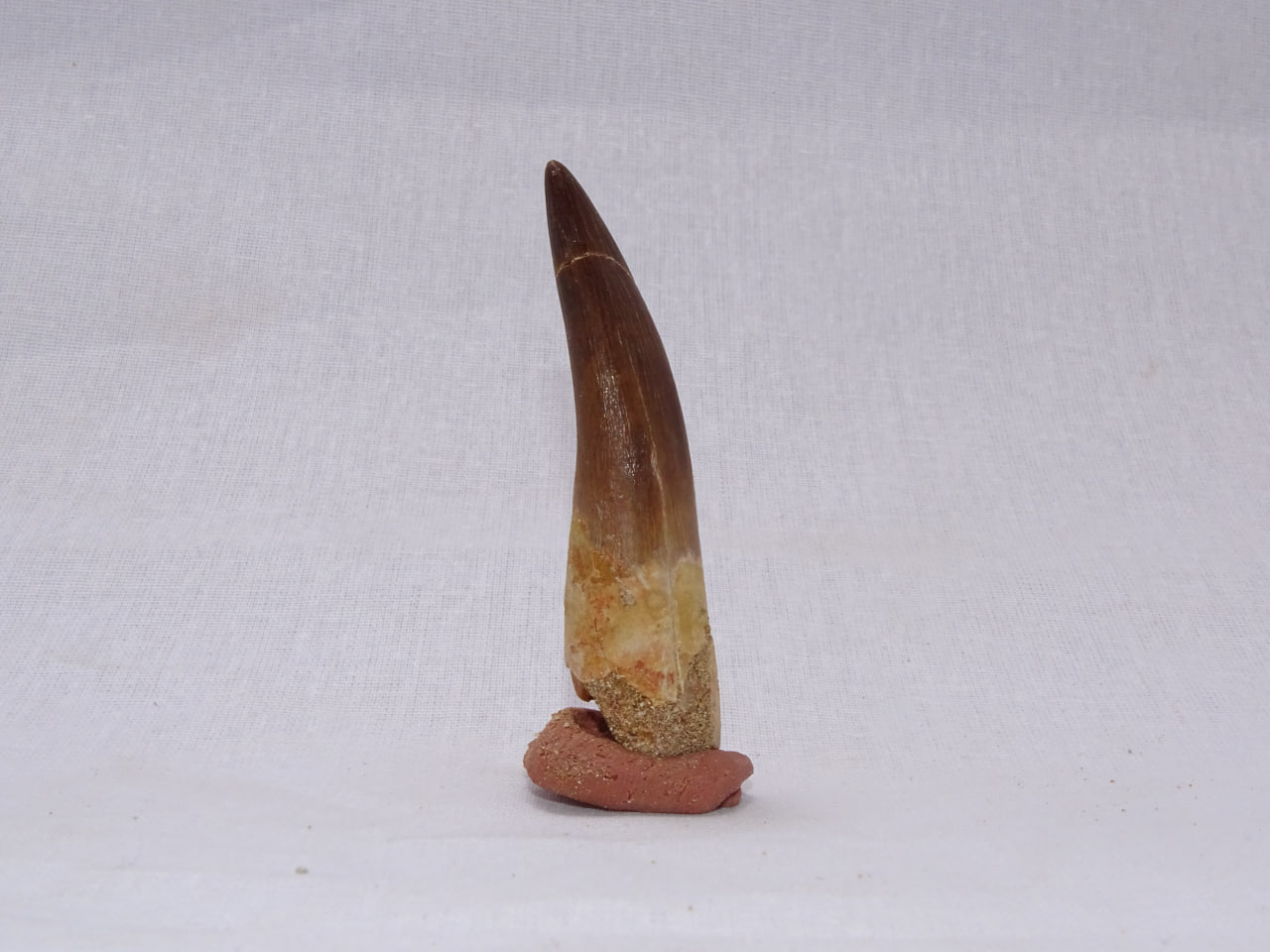Plesiosaur Zarafasaura Oceanis Tooth 2.55″ Rare Fossil Reptile
$ 70,00
1 in stock
|
Plesiosaurus |
|
|
SPECIES |
Zarafasaura Oceanis |
|
AGE |
Upper Cretaceous |
|
LOCATION |
Sidi chennan basin, Morocco |
|
FORMATION |
Phosphate Deposits |
|
SIZE |
2.55″ long |
|
CATEGORY |
Reptile, Amphibians & Synapsids |
| SUB CATEGORY |
Plesiosaur Fossil |
This tooth is a 2.55″ long specimen that originated from a massive plesiosaur named Zarafasaura oceanis, which roamed the earth during the time of the dinosaurs. The tooth was excavated from the phosphate deposits of theSidi chenane Basin in Morocco

Plesiosaurs were marine reptiles that possessed long necks and four flippers. They emerged during the Triassic period and went extinct alongside the dinosaurs at the end of the Cretaceous era. These creatures grew to enormous sizes, with some species measuring up to 17 meters long. Plesiosaurs were predators that preyed on slower moving creatures. They were air-breathing reptiles and gave birth to live young. There is evidence to suggest that they were warm-blooded.
The tooth originates from the vast phosphate deposits located in the Oulad Abdoun Basin near Khouribga, Morocco. These deposits are primarily mined for phosphate, which is one of the largest exports of Morocco. During the mining process, fossils are unearthed as a byproduct, thus saving them from certain destruction by the rock crusher.
In other words, while the primary goal of the mining operations is to extract phosphate, the incidental discovery of fossils during the process is a positive outcome, as it preserves these important artifacts from being destroyed.
Only logged in customers who have purchased this product may leave a review.



























Reviews
There are no reviews yet.